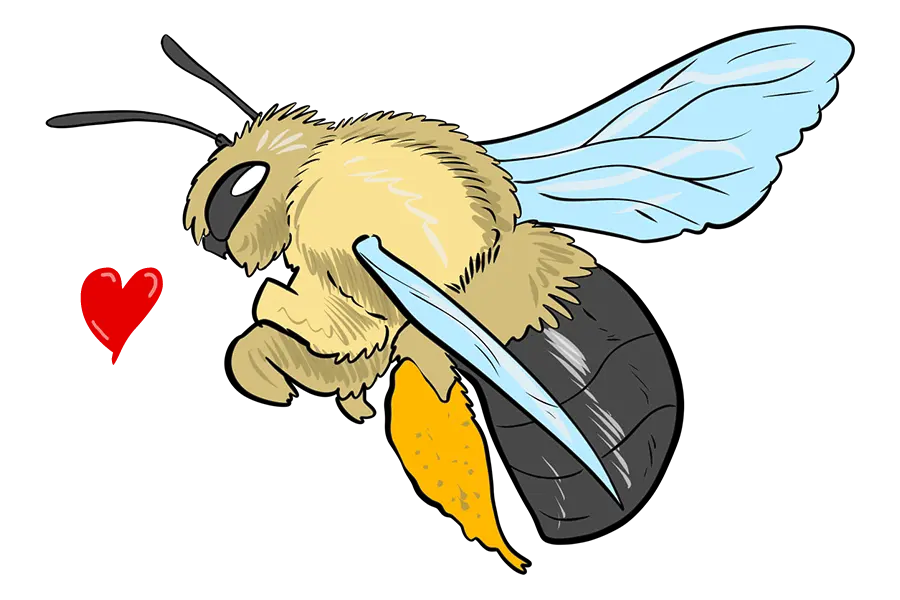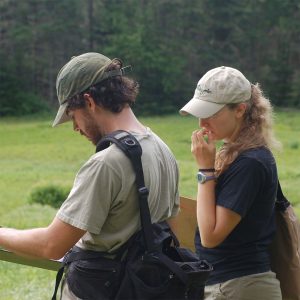 Eric Venturini is an Assistant Research Scientist at the University of Maine, where he studies wild bees. In one recent project, he managed bumble bee health and diversity surveys across the state. He also provides pollinator outreach and education to farmers and the public throughout the state, speaking at events throughout New England. This winter, he founded a consulting company Grow Wild Bees to work with landowners, non-profits, growers, and others to advise and guide them through the process of managing habitat for wild bees.
Eric Venturini is an Assistant Research Scientist at the University of Maine, where he studies wild bees. In one recent project, he managed bumble bee health and diversity surveys across the state. He also provides pollinator outreach and education to farmers and the public throughout the state, speaking at events throughout New England. This winter, he founded a consulting company Grow Wild Bees to work with landowners, non-profits, growers, and others to advise and guide them through the process of managing habitat for wild bees.
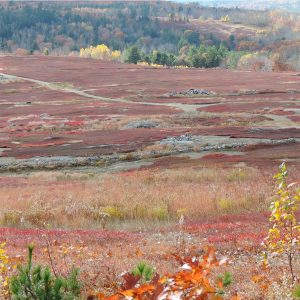 I talked to him recently to learn more about the research he’s done, and how he has applied it to his new business. He studies native wild bees in Maine, and his focus is on the lowbush blueberry, a small woody perennial shrub native to this region. It is unique in that it’s not cultivated: instead, New England forests are cut back. The blueberry plants that were already present in the forest understory become more dominant over time through management practices, eventually forming a contiguous acreage of solid lowbush blueberry.
I talked to him recently to learn more about the research he’s done, and how he has applied it to his new business. He studies native wild bees in Maine, and his focus is on the lowbush blueberry, a small woody perennial shrub native to this region. It is unique in that it’s not cultivated: instead, New England forests are cut back. The blueberry plants that were already present in the forest understory become more dominant over time through management practices, eventually forming a contiguous acreage of solid lowbush blueberry.
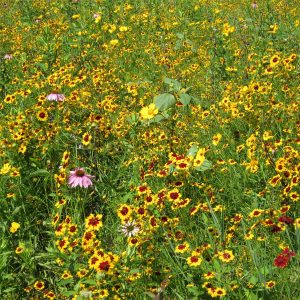 He has done studies on the effects of creating “pollination reservoirs”—densely planted reservoirs of pollen and nectar-rich flowers—to encourage wild bees and improve blueberry pollination. In this way, growers are able to have a diversified pollination portfolio, instead of relying solely on domesticated honey bees. His studies have shown significant increases in crop visitation rates and fruit set by the fourth year after the initial wildflower plantings.
He has done studies on the effects of creating “pollination reservoirs”—densely planted reservoirs of pollen and nectar-rich flowers—to encourage wild bees and improve blueberry pollination. In this way, growers are able to have a diversified pollination portfolio, instead of relying solely on domesticated honey bees. His studies have shown significant increases in crop visitation rates and fruit set by the fourth year after the initial wildflower plantings.
One of Eric Venturini’s main goals with Grow Wild Bees is to help farmers install pollination reservoirs so that they can realize an improvement in crop pollination as a result. His primary customers are growers, who have two motivations for requesting his services: (1) they are conservation-minded, and (2) increasing wild bee pollination is an alternative to relying on a single pollinator, historically the honey bee. With a diversified pollination strategy, growers avoid the risk of putting all of their eggs in one honey bee basket, so to speak.
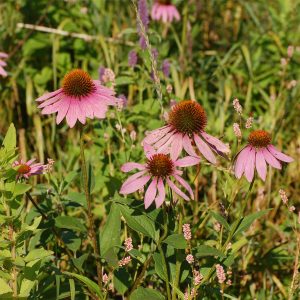 An important strategy for creating a successful wildflower planting—one that will endure from year to year—is site preparation. He recommends setting aside an entire season for preparing the planting area. Controlling weeds requires an understanding of weed ecology, because you’re not just trying to eliminate the weeds you see; you also need to eliminate the weed seeds that are in the soil.
An important strategy for creating a successful wildflower planting—one that will endure from year to year—is site preparation. He recommends setting aside an entire season for preparing the planting area. Controlling weeds requires an understanding of weed ecology, because you’re not just trying to eliminate the weeds you see; you also need to eliminate the weed seeds that are in the soil.
He told me that you want to encourage all the weed seeds to germinate (weeds are much easier to kill as seedlings), in order to prevent competition with wildflowers in future years. Otherwise, you will end up in the more costly situation (one I’ve experienced myself trying to establish a wildflower meadow!) of replanting the area in subsequent years. His goal is to prepare the area for planting for an entire year, so that it will last for close to 10 years or more.
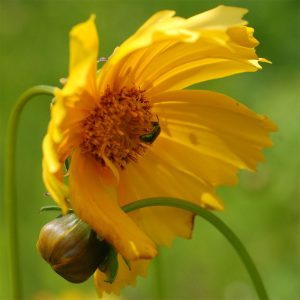 In a study Eric Venturini and co-authors published in the Journal of Economic Entomology, wildflower plantings installed in the margins of blueberry fields were quickly paid off by providing increased pollination services. The number of wild bee visitors to the crops increased measurably, showing the positive impact of pollinator reservoirs on crop pollination success.
In a study Eric Venturini and co-authors published in the Journal of Economic Entomology, wildflower plantings installed in the margins of blueberry fields were quickly paid off by providing increased pollination services. The number of wild bee visitors to the crops increased measurably, showing the positive impact of pollinator reservoirs on crop pollination success.
From a conservation standpoint and from the practical standpoint of the grower, adding pollination reservoirs is a win-win strategy. There are over a hundred species of wild bees associated with wild blueberries. By planting a number of different wildflower species, pollination reservoirs increase pollen and nectar resources in the landscape, favoring an abundance of diverse bee species, each differing slightly in their floral preferences.
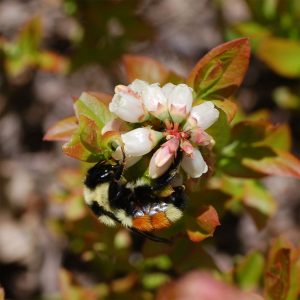 He also pointed out the importance of “pollination synergies.” For example, bumble bees provide a special kind of pollination service known as “buzz pollination”. They vibrate their flight muscles at high frequencies to release pollen that would otherwise be locked up inside certain types of flowers, including blueberries. In early spring, newly emerged bumble bee queens emerge from hibernation, shaking loose pollen from blossoms they visit (as they stock up on energy and provision new nests for the season), and covering the blossoms in pollen as they do so. Honey bees are incapable of releasing pollen in this way, but if they visit after a bumble bee, they become much better pollinators.
He also pointed out the importance of “pollination synergies.” For example, bumble bees provide a special kind of pollination service known as “buzz pollination”. They vibrate their flight muscles at high frequencies to release pollen that would otherwise be locked up inside certain types of flowers, including blueberries. In early spring, newly emerged bumble bee queens emerge from hibernation, shaking loose pollen from blossoms they visit (as they stock up on energy and provision new nests for the season), and covering the blossoms in pollen as they do so. Honey bees are incapable of releasing pollen in this way, but if they visit after a bumble bee, they become much better pollinators.
He noted that there are other benefits to maintaining a diversity of pollinators. For instance, some bees forage in colder weather or at an earlier point in time in the year. The bottom line is that the more pollinator diversity you have, the more pollination you have. This is why a new consulting service like Grow Wild Bees is so exciting. Our numerous native bees (over 4,000 species in the United States) have so often been neglected from a conservation and a pollination standpoint. Eric Venturini’s work goes to show how profitable it is—both economically and environmentally—to enhance the landscape with floral pollination reservoirs that support our under-appreciated wild bees.
All photos in this article are credited to the University of Maine.
Posted March 21st, 2017 • Updated • By Elise Fog

